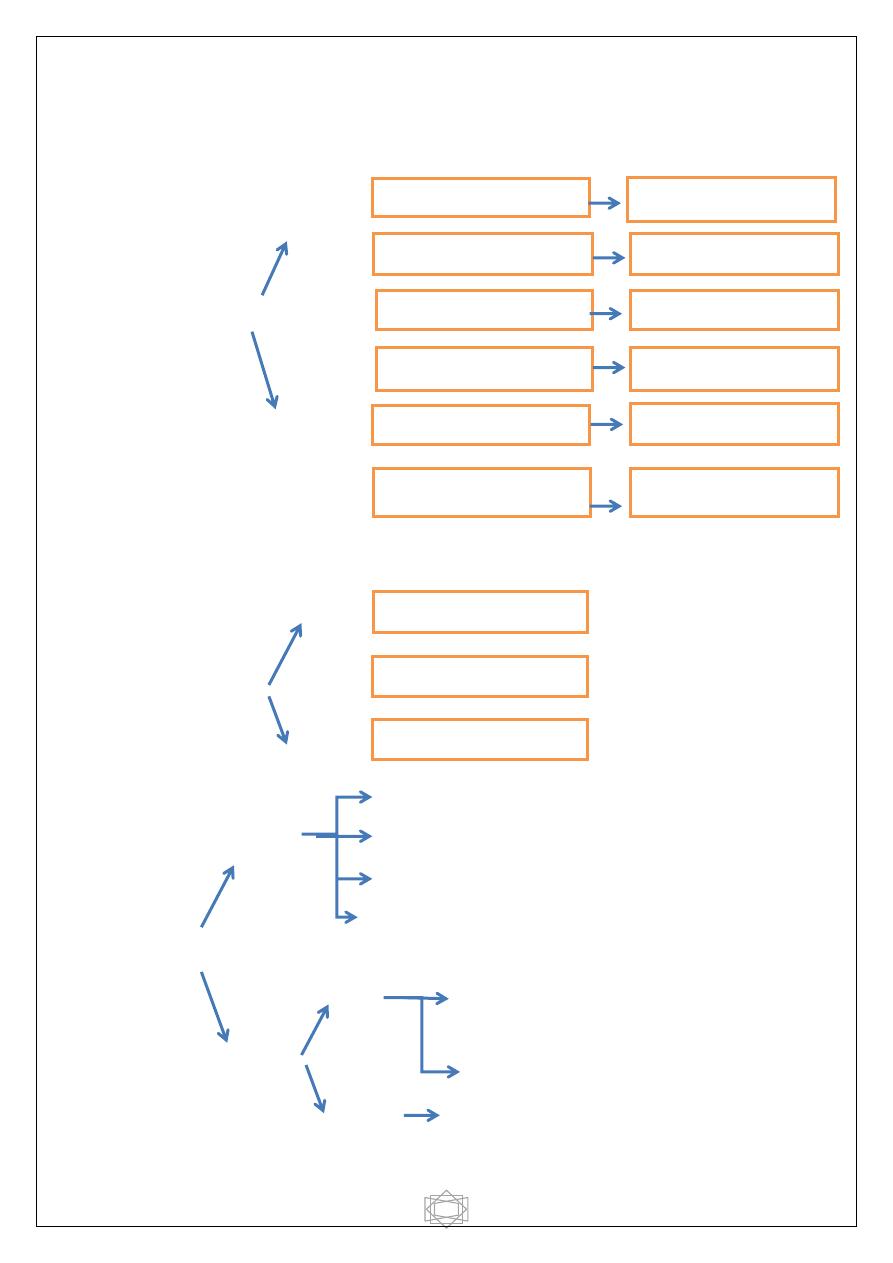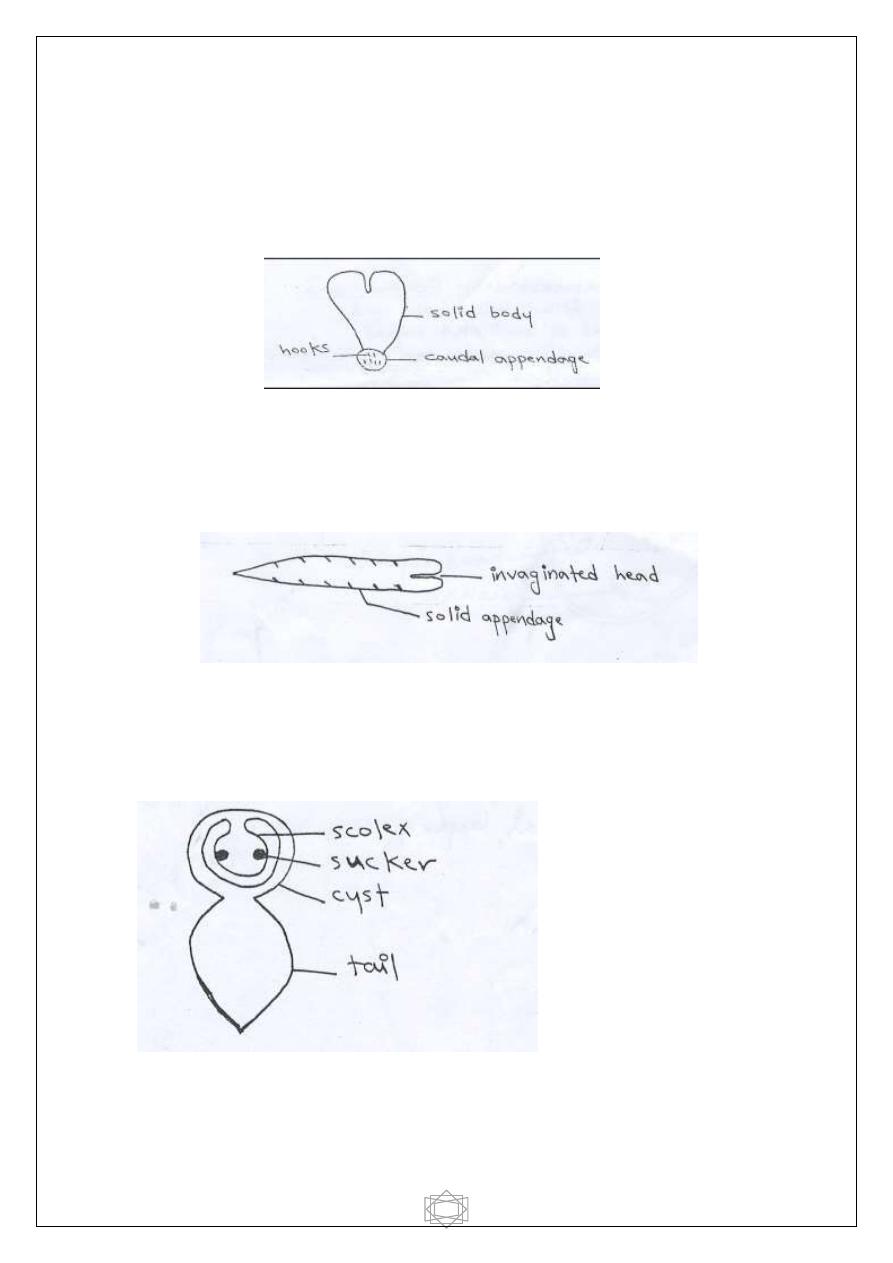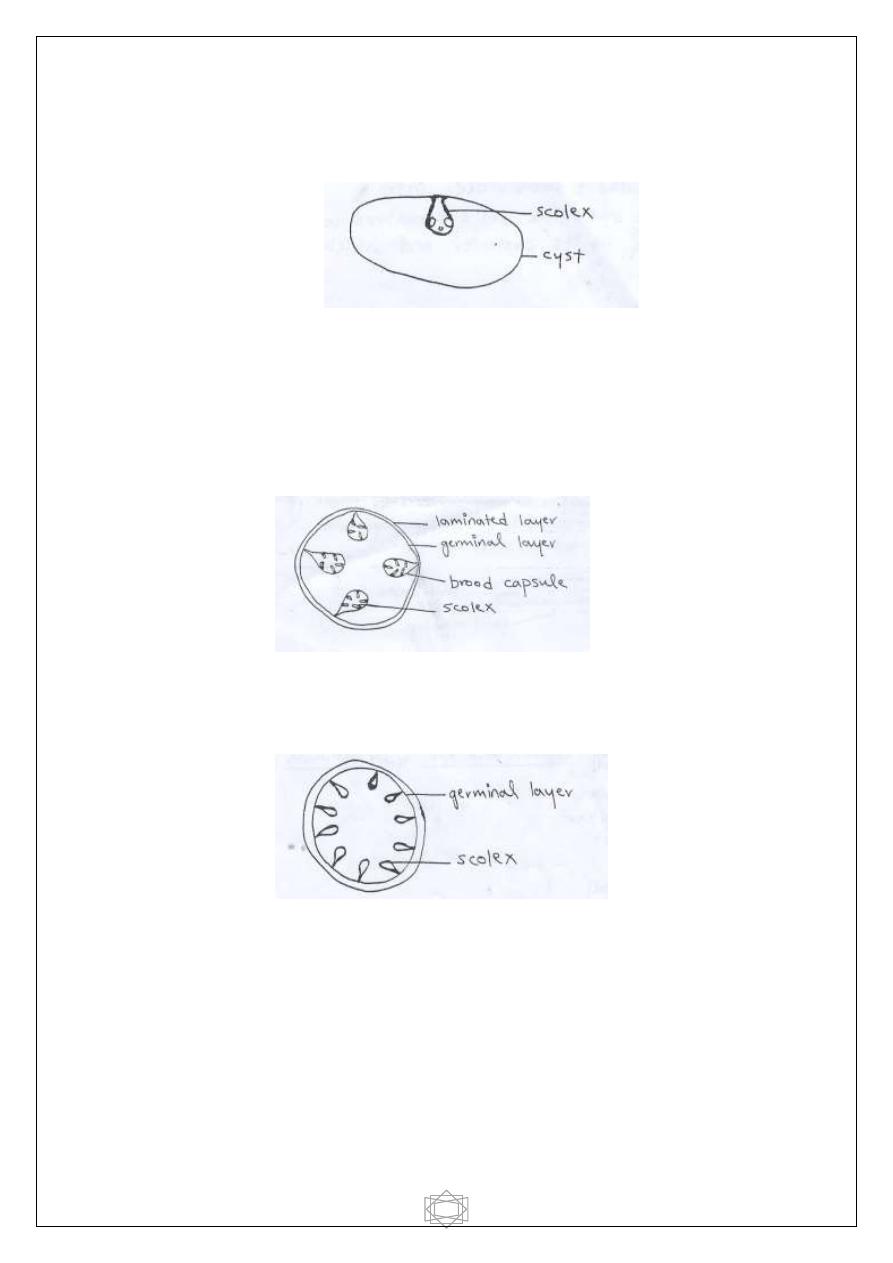
1
Parasitology
د.صادق الشيخ
Helminthology
Introduction
Helminthology: The science which deals with the study of helminthes.
Helminthes: The term used for all groups of worms that live as parasites.
The Classification of Organisms :
It is a procedure of putting organism's in-groups according to
their food need.
Basis of classification according to structural similarities called
Taxonomy,
1- General appearance.
2- Arrangement of body parts. 3 – Type of feeding .4 –DNA and PCR .
The five kingdoms are:
1- Manerous: are simple, single cell, some can make their own food
others cannot. Ex: Bacteria.
2- Protist : are complex single cell, some can make their own food
others cannot . Ex: in a drop of pond water Paramecium,
Amoebae, Euglena. Phylum protozoa.
3- Fungi: are many –celled organisms that absorb food from dead
and livings things, Ex: Mushrooms.
4- Plants: are many- celled organisms that make their own food, Ex:
Roses, trees.... etc.
5- Animals: are many – celled organisms that cannot make their own
food. Ex: Mice, birds, worm, man.
Taxonomy: the science which deals with classification of animals, plants
... etc. ( Livings )
The six subdivisions of the kingdoms :
Include :- Phylum
Class
Order
Family
Genus Species

2
Animal kingdom
Vertebrates (40.000) spp invertebrates 3millions
one phylum with skeleton inside animals without back bone
Their bodies 8 phyla
Classes:-
1 Mammalian 6000spp
2 Birds 8000 spp
3 Amphibian Frog 2000 spp
4 Reptile korekodile 2000 spp
5 Fish carp 220000 spp
1 Sponge
e.g. sponge
2 Coelenterate
e.g. hydra
3 Platyhelminthes
e.g. Tapeworms ,Flukes
4 Round worm
e.g. Ascaris
5 Annelids
e.g. leech and
earthworm
6 Molluscus
e.g. snails
7 Echinoderms
e.g. Sea star
8 Arthropods
e.g. Grass hopper, insects
e.g. flies ,fleas ,bugs ,lice

3
General characters of helminthes :
1:- They are multicellular bilaterally symmetrical animal.
2:-Very few worms' infections are potentially dangerous and
the ability of these to produce clinical diseases is more often
associated with:
- No. of the parasites.
- Unusual site in which they occur.
- Re – infection.
- Immunity of the host.
3- Unlike protozoa, most helminthes are unable to multiply
within the host, so most helminthes infections are light.
4- Many helminthes have a limited distribution because they
require a particular climate and the presence of reservoir or a
suitable vector.
5- Many helminthes require another host to complete their life
cycle.
6- The worms obtain their nourishment from hosts tissues or
intestinal contents through their digestive system, but tape
worms have no digestive system so they obtain their
nourishment by absorption of predigest nutrients through their
body wall.
7- The worms have parasite protective mechanisms which
prevent the host damaging outer surface.

4
Methods of transmission
1- Fecal – oral route: infective eggs or larvae may swallowed by
contaminated food or water e.g. Ascaris and Enterobius.
2- Swallowing of an infective larvae in the tissue of another host e.g.
Tania solium, Tania saginata and Trichinella spiralis.
3- Active penetration of the skin by the larva e.g. Hook worms and
Shestosoma sp.
4- Bite of blood sucking insects e.g. filarial worms
5- Inhalation of the infective eggs with air-dust, eggs too light to be
spray with air-dust. E.g. Enterobius vermicularis.
6- Contact with contaminated people clothing sticky eggs adheres on
the underwear of infected host e.g. E. vermicularis.
Cestodes or Tapeworms
General characters
- The adult is usually found in the intestine of vertebrate and
the larva develops in the tissues of various intermediate
hosts.
- The adult body is composed of scolex (head) ,neck and
ribbon – like chain of segments (strobili) { immature
,mature and gravid segments}
- All the tapeworms of man are hermaphroditic.
- There is no mouth and no trace of an alimentary system, so
nutrients are absorbed directly from host gut through the
body wall.
- Three groups of tapeworms infect humans:-
a- Tania group {Giant adult tapeworms} and Echinococcus
{minute tapeworms}.
b- Hymenolepis group and Dipylidium caninum.
c- Broad fish tapeworm Diphyllobothrium latum.
- All cestodes have indirect life cycle except Hymenolepis
nana.

5
Pathogenesis
Injuries produced by the worms are due to:-
Adults
Mechanical Action
Larvae
Adults
Chemical action
Larvae
Inflammation
Local
necrosis
Repairing
Encapsulation
Reaction
Direct absorption of toxins
General allergic responses
Indirect nervous reflexes
Sucking blood
Sharing host's nutrients
Movements and migration
Size and numbers
Pressure
Attachment
Irritation
Obstruction
Atrophy
Catarrhal inflammation
Loss of weight
Macrocytic anemia
Hemolysis
Tissue lysine
Anticoagulins

6
Cestodes larvae (Metacestode):
1- Solid metacestodes : subdivided into :-
a- Procercoid sac-like solid structure with caudal appendage at its
posterior end which contain hooks.
b- Plerocercoid: chalky white solid structure composed of caudal
solid appendage and invaginted head in the neck.
2- Bladder metacestodes : subdivided into –
a- Cysticercoid: has a bladder filled with parenchyma
e.g. Hymenolepis spp .and D.caninum.

7
b- Cysticercus : has fluid filled bladder with invaginated scolex
.e.g.Taenia sp
c- Hydatidcyst :metacestode of Echinococcus composed of
bladder filled with fluid and surrounded by germinal and
laminated layers . from germinal layer brood capsules arise
which contain number of scolices .
d- Coenurus : with multiple scolices , inside non laminated
bladder ,arise from germinal layer e.g. Tania multiceps
------------------------------------------------------------------------------------------------
